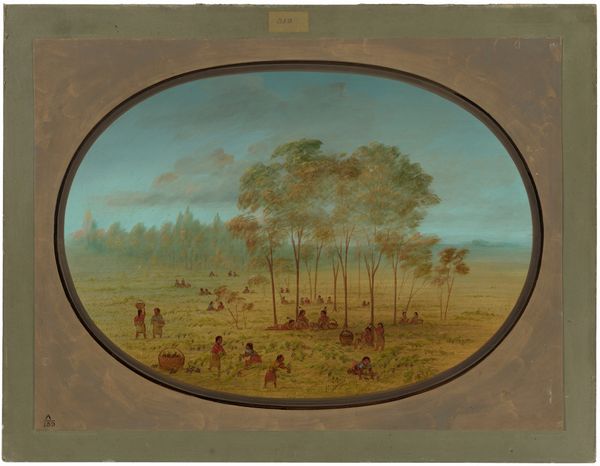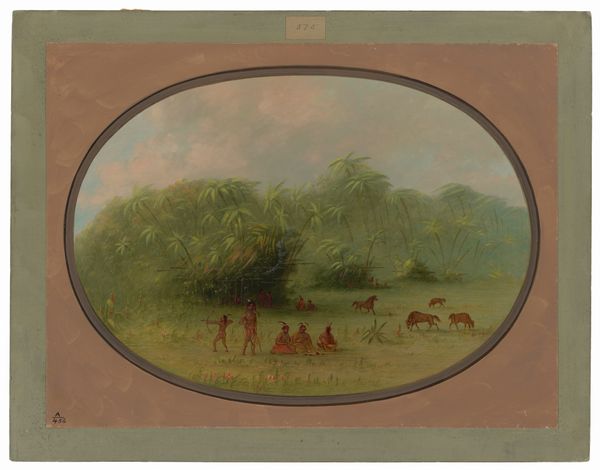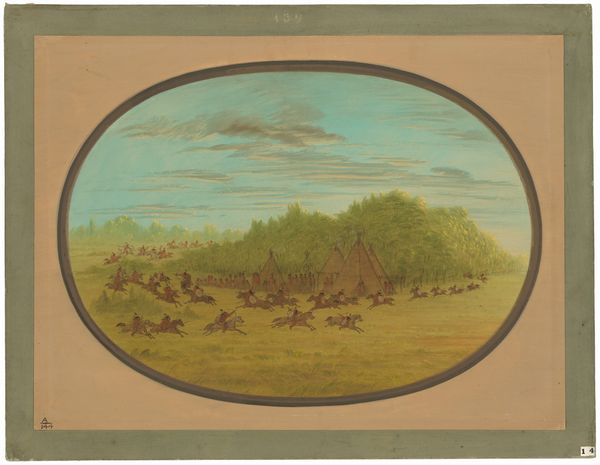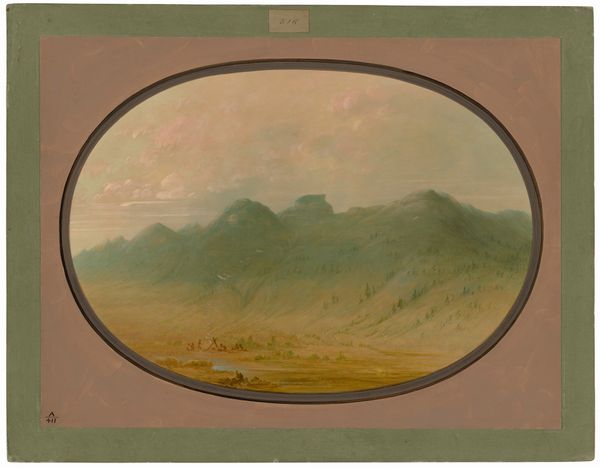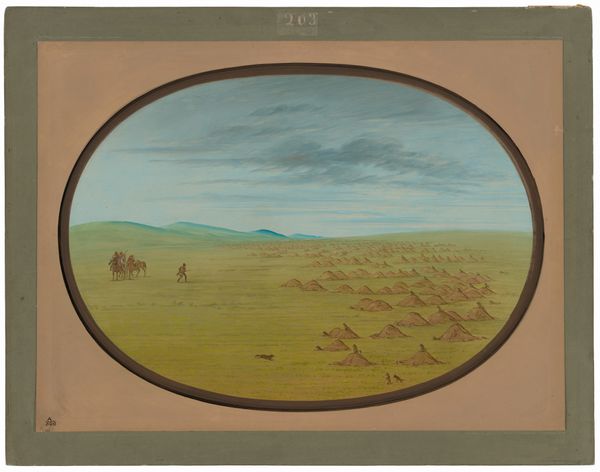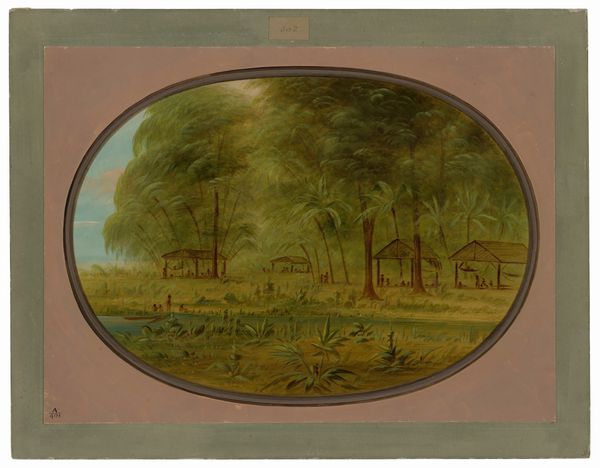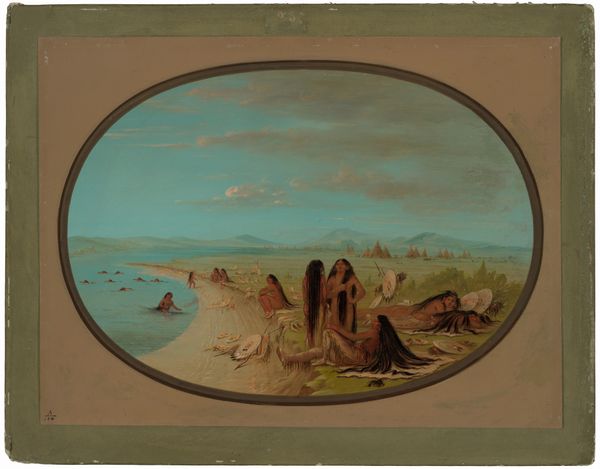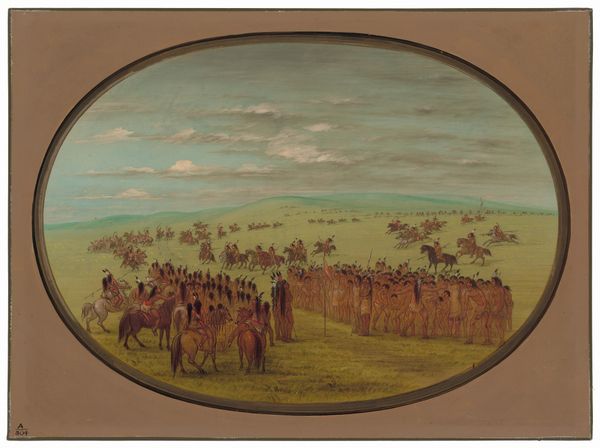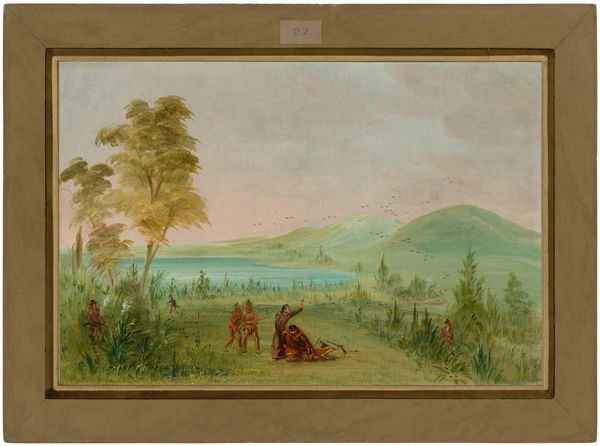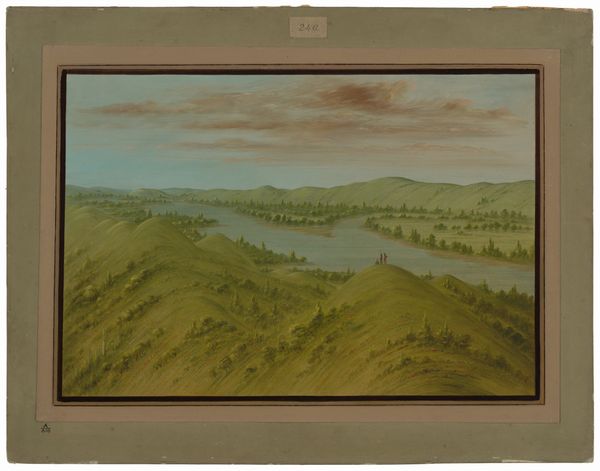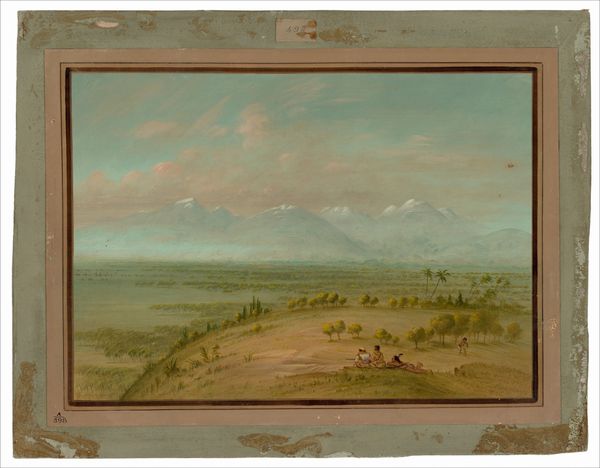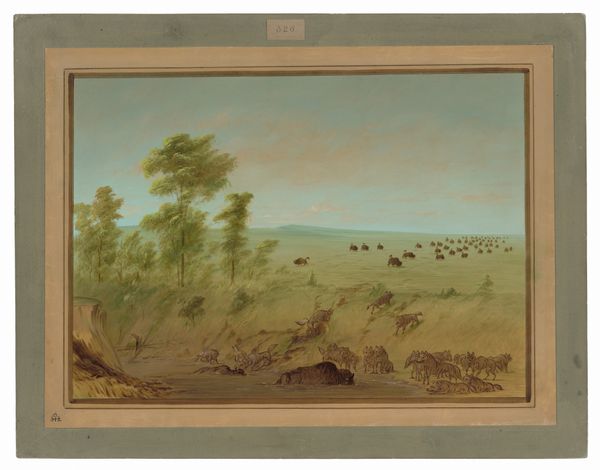
Dimensions: overall: 46.5 x 61.8 cm (18 5/16 x 24 5/16 in.)
Copyright: National Gallery of Art: CC0 1.0
Editor: Here we have George Catlin’s, “Halsey’s Bluff – Sioux Indians on the March,” created sometime between 1861 and 1869, using watercolor and colored pencil. It strikes me as almost a serene, if simplified, depiction of movement across the plains. What aspects of its composition and context draw your attention? Curator: Immediately, I'm drawn to the tension between the romanticized portrayal of Indigenous life and the materials used to create it. Catlin's work, like much art from this period, relied on the extraction of resources – pigments, paper – often tied to colonial expansion and exploitation. What do you observe about the material realities implied, but unseen, in the artwork itself? Editor: I hadn't really considered the materials themselves, just the image they create. The pigments must have been sourced from somewhere, involving a whole chain of production and, as you say, maybe exploitation. The paper too...it makes the scene less innocent somehow. Curator: Exactly! And consider Catlin’s artistic labour itself. Was his depiction an act of preservation or appropriation? By focusing on the Sioux’s ‘march’, he creates a romantic vision, perhaps overshadowing the true complexities and forced migrations of the period. How might examining the means of representation challenge its aesthetic appeal? Editor: That’s a really interesting point. The beauty almost seems complicit now. It’s like the artwork itself is a product of a specific power dynamic. Curator: Precisely. Understanding the artwork through its materials, labour, and the societal forces at play, reveals deeper truths embedded within its aesthetic surface. Editor: This perspective makes me reconsider everything I thought I knew about it. It moves the focus from what is depicted to how and why it was made. Curator: Indeed, this is the power of materialist analysis. It reminds us that art doesn’t exist in a vacuum but is intrinsically linked to the social and material conditions of its creation.
Comments
No comments
Be the first to comment and join the conversation on the ultimate creative platform.
